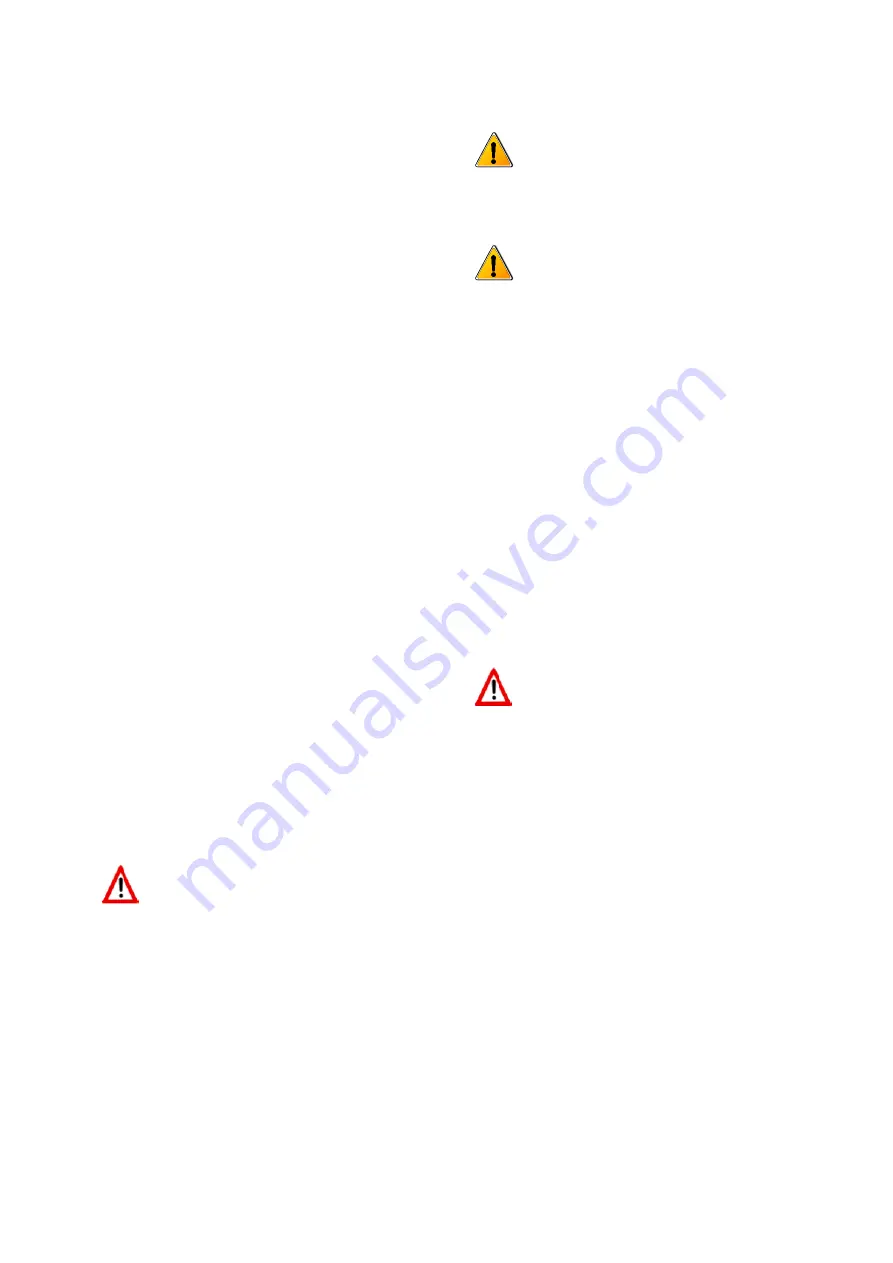
Page
44
of
64
deflate the tyre a little and check again.
Starting from the maximum tyre pressure you
can now reduce the pressure through the valve
to suit your needs. Please observe the
recommended tyre pressure range.
MOUNTING WHEELS
To mount a wheel, follow the reverse
procedure of wheel dismounting. Make sure
the wheel is correctly seated in the dropouts
and accurately centred between the fork legs
or the rear and chain stays. Make sure that the
quick-release and the drop-out catches are
correctly seated. For more information see the
chapter “How
to use the quick-
releases”
.
lf you have disc brakes, check before mounting
the wheel whether the brake pads rest snugly
in their seats in the brake calliper body. The
gaps between the brake pads and the wheel
should be parallel and the wear indicators in
their correct position. Make sure that you push
the brake disk between the brake pads. After
mounting the wheel and tightening the quick-
release, pull the brake lever (several times, if
you have disc brakes).
If your bike has a multi-speed hub, verify the
proper assembly of the individual component,
and tension the chain before tightening the
wheel nuts by pulling the
wheel backwards.
Verify that the amount of movement
midway between sprockets and chainwheel is
not more than two centimetres. Make sure
there is no excessive chain slack!
After mounting the wheel and tightening the
quick-release, pull the brake lever (several
times, if you have disc brakes). To do so lift
your FISHAW bike off the ground and spin the
wheel with your hand. With the wheel spinning
the rotor should not drag along the brake
calliper or the brake pads and the rim should
keep off the (rim) brake pads.
Before setting off again check that the
brake surfaces and/or rotors are still free of
grease or other lubricants after the wheel
mounting.
Check whether the brake pads hit the
rotors or brake surfaces of the rims. Check the
seating of the wheel attachment. Always do a
brake test as described in the
chapter
“Before
Every Ride
”
HEADSET
The headset connects the fork to the frame but
allows it to move freely. It must afford virtually
no resistance to moving, if your FISHAW
electric bike is to go straight, stabilizing itself as
it runs. The shocks caused by uneven road
surfaces expose the headset to considerable
levels of stress. In this way it can become loose
and maladjusted.
Riding the bike with a loose headset
greatly increases the stress on the fork and
the bearings. This can lead to damage to the
fork. Risk of an accident!
CHECKING AND READJUSTING
Check the headset for movement by placing
your fingers around the upper head tube race.
Bring your weight to bear on the saddle, pull
the front brakes with your other hand and push
the FISHAW electric bike firmly back and forth
with the wheel remaining on the ground. If the
bearing has movement, you will feel the upper
head tube race moving in jerks relative to the
lower head tube race - visible as a small gap in
between the head tube races.
Summary of Contents for UB200
Page 1: ...E BIKE MANUAL ...
Page 3: ...Page 2 of 64 ...
Page 4: ...Page 3 of 64 ...
Page 5: ...Page 4 of 64 ...
Page 6: ...Page 5 of 64 ...
Page 65: ...Page 64 of 64 FiSHAW Technology Pty Ltd 2021 ...
















































